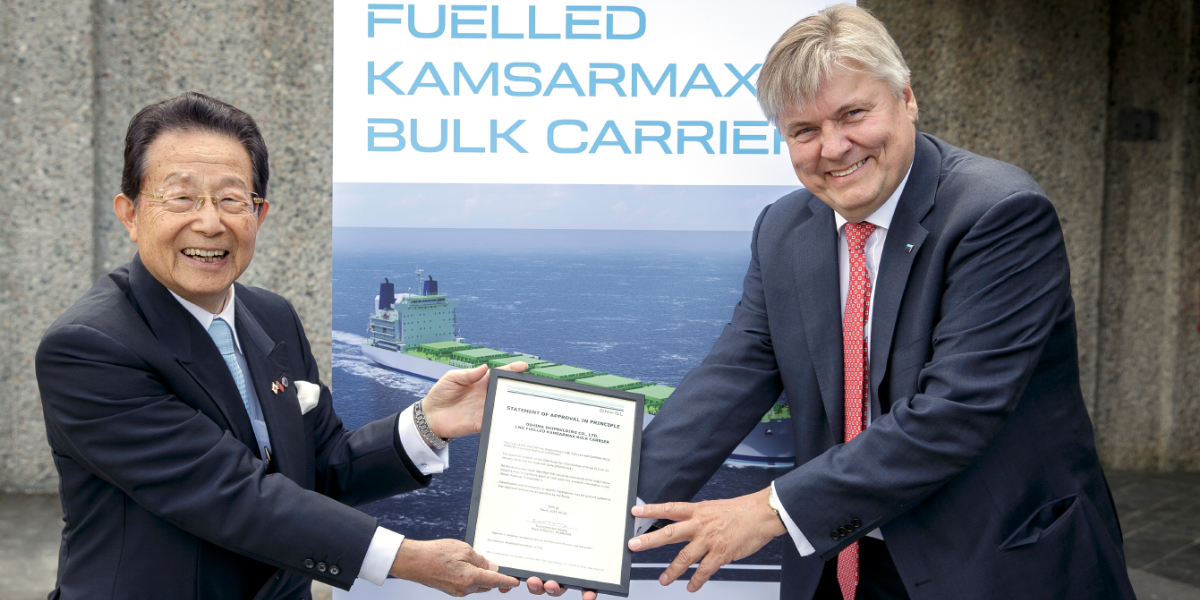
DNV GL has presented Oshima Shipbuilding Company with an Approval in Principle (AiP) certificate for a LNG-fuelled Kamsarmax bulk carrier at the Nor-Shipping exhibition in Oslo today. The new design can use both can use LNG and heavy fuel oil (HFO) to power the main engine, the generators, and the boiler.
“LNG is emerging in a number of ship sectors and has great potential. We were very pleased to work on this innovative design with Oshima. It offers customers a flexible, safe, future-proof solution and the opportunity to almost eliminate SOx emissions and particulate matter, cut NOx by 80 per cent with EGR (Exhaust Gas Recirculating) and reduce CO2,” says Morten Løvstad, DNV GL Bulk Carrier Business Director
As space on deck is limited on a bulk carrier, the design features a new solution – changing the ship’s superstructure to a U-shape that can accommodate the LNG tank in its centre. This approach allows the accommodation deck house to be completely separated from the LNG storage tank and scalability in terms of the amount of LNG storage onboard. Meanwhile, a tank cover adds an additional safety barrier and ensures compliance with the draft IGF Code. The bunkering stations for LNG, heavy fuel oil (HFO) and marine diesel oil are located at the side of the accommodation deck house.
Tatsurou Iwashita, Director and General Manager of the Design Department at Oshima, points out: “One of the main factors for shipowners and operators considering the use of LNG as ship fuel is the space required to store LNG on board. But as a result of our changes to the superstructure, our design does not reduce the vessel’s cargo capacity. Combined with its dual fuel capabilities, this should make the design very attractive for charterers, especially for trade routes where the LNG fuel price is competitive to HFO and substantially cheaper than marine gas oil (MGO).”
The Kamsarmax vessel is designed for dual fuel operation, using both LNG and HFO to power the main engine, the generators and the boiler. LNG handling system for receiving AiP was supported by Mitsubishi Heavy Industries. Oshima’s latest Panamax/Kamsarmax hull design provided the basis for the vessel’s shape. This design has proven successful, and its fuel performance is well documented, providing the experts with important operational data they could use to adapt the design to LNG operation.
The vessel’s parameters are also based on data generated in a DNV GL feasibility study from 2014 that examined the use of LNG in a trade route between Europe and North America from a technological and economic perspective. “Taking all relevant factors into account, we found that a LNG-fuelled Kamsarmax bulk carrier, which only uses LNG in Emission Control Areas, would require 500–700 m3 of LNG and one bunkering operation for a round trip between Europe and North America,” says Løvstad. If it were powered with LNG for the entire voyage, it would require 2,000–2,500 m3 of LNG.
Source: DNV GL
 IT
IT  en
en

